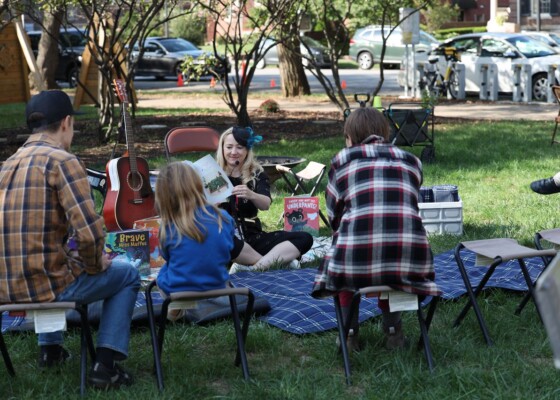PK Idea: Reject Chain City
November 22, 2010This post was written by Robby Slaughter, owner of a productivity consulting practice in Indianapolis. Robby presented this idea as a part of PechaKucha Volume 11: FOOD . A Spirit…
This post was written by Robby Slaughter, owner of a productivity consulting practice in Indianapolis. Robby presented this idea as a part of PechaKucha Volume 11: FOOD . A Spirit & Place event, this event featured 8 ideas competing for a $5,000 implementation prize, courtesy of CICF and Indiana Humanities Council.
I believe that perhaps the most critical challenge facing our society today isn’t global warming, a pending economic collapse, cultural misunderstandings or religious fascism. Nope, I’m most worried about the echo chamber.
That is, most of the people talking about specific and serious problems are mostly talking to each other. It’s hard to explain the importance of sustainable farming practices and ethics of fair trade to someone who doesn’t know if they can afford groceries this week. Moreover, the us-and-them mentality isn’t just a question of socioeconomic status. The most expensive options in the marketplace are sometimes the least socially-conscious.
As much as I love going to my local farmers market, it’s pretty clear that most Hoosiers live much closer to hundreds of other sources of food. Most of these are chain restaurants, fast food joints, gas stations and drugstores. These aren’t great places to learn about nutrition, local economies or social justice. It seems like the various food movements are but a scratch yearning to become a dent in an unyielding universe.
That’s why I put together a presentation called “Embracing Chain City” based on a preposterous idea: instead of hoping the sprawl will come to the markets, what if we brought the markets out to the strip mall? How about installing a miniature garden/farmers market/information booth on a flatbed trailer and hauling it out to the strip malls and shopping centers of everywhere?
The principal benefit of this audacious scheme is that it exposes new ideas about food to a totally new crowd. There is virtually no overlap between those who patronize the INDIEana Handicraft Exchange and those who shop at Walmart. If we park a garden in front of a high-traffic, big-box store we’re likely to get some funny looks and some new perspectives.
There’s a second, more subtle advantage to embracing chain city. If we occasionally get out of our hip, urban, independently-owned enclaves, we will also kill the echo chamber. It’s great fun to discuss minute philosophical points, but we’re at point where we need to focus on bringing more people to the dialogue.
When Indianapolis Monthly reported in 2008 that our city has 44 percent more chain restaurants than the national average, many were outraged. Let’s replace that anger with intrigue. This information merely tells us where Hoosiers go to eat. Let’s use this data to bring new ideas about food to where most people actually are.


